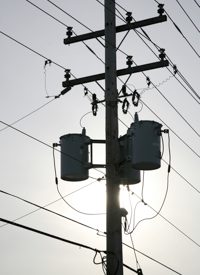
The new air regulations will commence in 2013, and then only for the state’s largest carbon emission entities, typically electrical utility companies and large industrial plants; the program will expand in 2015 to include 85 percent of "pollution" emitters. The plan will first institute a cap on emissions, and then allow businesses that are under their carbon limit to sell their excesses to companies that have exceeded their carbon allowance. Businesses will have an initial requirement to pay 10 percent of their credits, and they will be able to purchase carbon offsets, which will comprise emission containment projects such as investments in forestry, to comply with eight percent of their annual emission obligations.
State officials expect other state and federal officials to observe the California model, hoping that similar programs — or, as they would prefer, a national program — will be employed throughout the country. "When Washington considers how to address climate change, as I think it will, California’s climate plan will serve as a role model for the national program," asserted Stanley Young, the board’s spokesman.
Proponents tout the plan as a robust economic engine, as it will "encourage" businesses to innovate and invest in clean energy technologies. But industry leaders argue that cap-and-trade will stunt job creation by dumping more costs on businesses and hiking consumer prices. "We are very concerned about the negative impacts the policy may have on the state’s economy, jobs picture and energy costs," expressed Catherine Reheis-Boyd, president of the Western State Petroleum Association. "This policy, if adopted, will amount to a new tax on refiners and other energy intensive industries that could total billions of dollars over several years."
Indeed, opponents contend that the plan is not cap-and-trade, but cap-and-tax, and a job-killing initiative that will continue to burden California’s already stagnant economy. "By forcing trade-exposed industries to purchase up to 10 percent of what were to be free emissions allowances, CARB [California Air Resources Board] will be in effect imposing a new tax on regulated entities," wrote industry leaders and the California Chamber of Commerce in a letter to the board. "In addition to being legally questionable, this tax will lead to dramatically higher energy costs that will harm virtually every sector of our economy."
California’s new program will order emitters to purchase allowances under a yearly emissions cap that will gradually decline over time. The requirements will force many companies to buy extra credits from other companies that hold a surplus of allowances — hence the name, "cap-and-trade." Many companies worry that the new rules will put them at a severe disadvantage to competitors in other states and countries who sell their products in the California market but do not suffer from the stringent rules they must adhere to. While businesses and consumers suffer from inflated costs, critics surmise that polluters emitting low greenhouse-gas levels could reap a hefty profit from arbitrary market incentives, creating a "secondary market."
But some critics doubt that California’s exclusive cap-and-trade system will have much of a future. "In the absence of a national program or even regional programs getting much traction, I don’t think this will go far," said Steven Hayward, an environmental specialist at the conservative American Enterprise Institute. "It will probably get off with a bang, with some big early trades capturing some low-hanging fruit. But then it will wither and die an ignominious death."
Jan Mazurek, a director at the Nicholas Institute for Environmental Policy Solutions at Duke University, conveyed a similar sentiment:
Although other states and some Canadian provinces such as Quebec and British Columbia hope to link their caps to California’s, a big factor in the state’s success will be whether or not they have to go it alone. Small markets mean fewer trading opportunities — and so potentially higher costs.
Cap-and-trade, particularly on the national level, could harbor a myriad of unintended consequences, as the impulse for corrupt activity in an artificially created market could wreak havoc on the economy. In reality, such a system could be a boon for certain corporations and disastrous for middle- to low-income households who would suffer from skyrocketing food and energy prices. Take, for example, Enron, the fraudulent corporation that many leftists continue to point to as proof that capitalism has become a decayed ideology.
Enron executives did little to cloak their lust for a cap-and-trade system. In 2002, the Washington Post revealed that "an internal Enron memo said the Kyoto agreement, if implemented, would do more to promote Enron's business than almost any other regulatory initiative outside of restructuring the energy and natural gas industries in Europe and the United States." After President Bush withdrew the United States from the Kyoto treaty, Enron became one of the most enthusiastic supporters of a domestic regulatory carbon-trading system. The scandal-ridden company believed such a program would enable them to dominate the U.S. energy market, as electric utilities would have to shift from coal to natural gas as the only viable method for electricity production.
Moreover, Enron was a major trader of carbon emissions throughout the world, and company executives believed a domestic cap-and-trade system would position their company as a key player in the carbon trading market. Slapping a price on greenhouse-gas emissions would only stir a transfer of wealth from some sectors over to others, as would have been the case for Enron if it succeeded in its lobbying efforts. But ultimately, if such a scenario occurred, the regulatory scheme would in fact redistribute wealth from the American people — through increased prices — to politically connected companies such as Enron.
Similarly, General Electric lobbied heavily for President Obama’s cap-and-trade proposal in 2009, not only because GE is the largest wind turbine generator manufacturer, as well as other electrical generation turbines, but because it could have pocketed millions of dollars from the so-called "secondary market" — or the carbon-trading market. In fact, the company had apparently been gearing up for the legislation with an entire unit dedicated to operating in the "secondary market."
Although such scenarios may be hard to fathom in a single state, California’s model could indeed spur a national plan (though many say it is unlikely), as it was heavily pushed by Obama and the majority of Democrats. But in the end, cap-and-trade will lead to higher consumer prices and a government-induced market that picks its winners and losers. And the artificial "secondary market" that such a plan could lead to would be only an unfortunate bonus for some entities.



